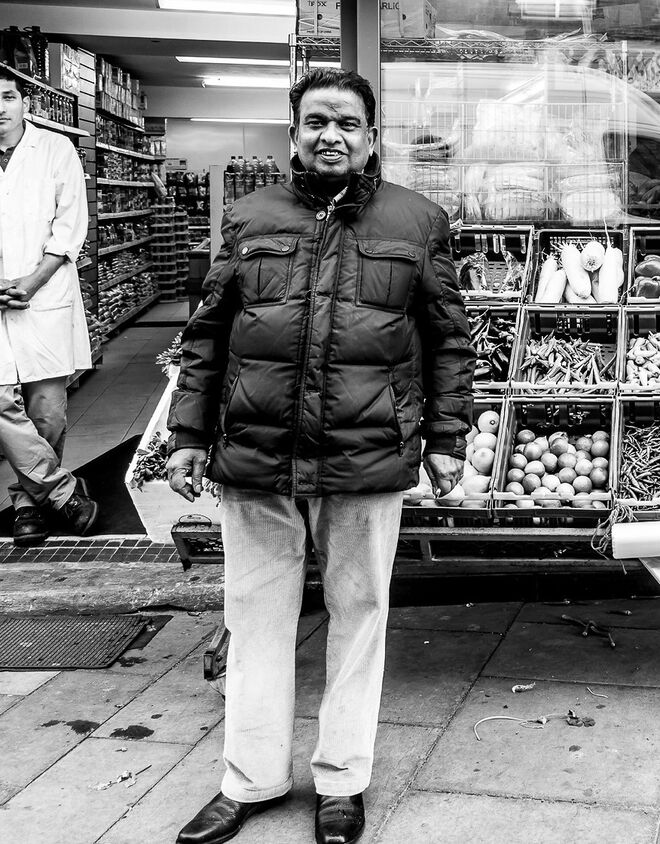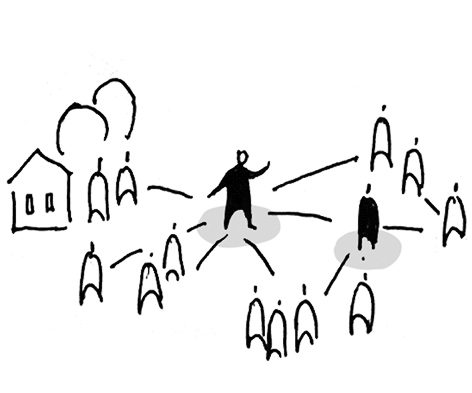18.4. Informal Stewardship
Aus Pattern Language Wiki
Within Polycentric Governance, and especially within Public-Private Place Management, provide for informal kinds of governance.
Problem-statement: One of the most important forms of governance of urban spaces is often one of the least recognized: the informal stewardship of individuals and institutions located within the neighborhood.
Discussion: The urbanist Jane Jacobs famously described “eyes on the street” as a form of stewardship of the public realm1. Residents, business employees, owners, members of civic institutions, and even visitors, all provide an informal network of governance, able to sense and react to problems as they occur. These can include responses to control criminal behavior, prevention or repair of damage to public structures, and mutual support during natural events like storms. Positive stewardship acts can include small repairs, beautification projects, artwork, and other improvements.
Care must be taken, however, to ensure that these informal governance acts are themselves monitored to assure that the rights of others are not unduly infringed — for example, populations within the public realm who should not be made to feel unwelcome without cause.
Therefore:
Support the informal governance of urban space, and particularly the public realm of streets, squares and parks, by encouraging the informal stewardship of adjacent residents, businesses and civic institutions. Invite and encourage local stakeholders to participate in informal governance, providing resources as needed. But remind them also of the limits of their authority.
Review and encourage informal stewardship of the neighborhood within the Neighborhood Planning Center. …
¹ Jacobs also wrote about retail owners and employees providing numerous services within the neighborhood, for example by holding residents’ keys for others to pick up later. See Jacobs, J. (1961). The Death and Life of Great American Cities. New York: Random House.
Mehaffy, M. et al. (2020). INFORMAL STEWARDSHIP (pattern). In A New Pattern Language for Growing Regions. The Dalles: Sustasis Press. Available at https://pattern-language.wiki/.../Informal_Stewardship
SECTION I:
PATTERNS OF SCALE
1. REGIONAL PATTERNS
Define the large-scale spatial organization…
1.4. 400M THROUGH STREET NETWORK
2. URBAN PATTERNS
Establish essential urban characteristics…
3. STREET PATTERNS
Identify and allocate street types…
4. NEIGHBORHOOD PATTERNS
Define neighborhood-scale elements…
5. SPECIAL USE PATTERNS
Integrate unique urban elements with care…
6. PUBLIC SPACE PATTERNS
Establish the character of the crucial public realm…
7. BLOCK AND PLOT PATTERNS
Lay out the detailed structure of property lines…
8. STREETSCAPE PATTERNS
Configure the street as a welcoming place…
9. BUILDING PATTERNS
Lay out appropriate urban buildings…
10. BUILDING EDGE PATTERNS
Create interior and exterior connectivity…
10.1. INDOOR-OUTDOOR AMBIGUITY
SECTION II:
PATTERNS OF MULTIPLE SCALE
11. GEOMETRIC PATTERNS
Build in coherent geometries at all scales…
11.2. SMALL GROUPS OF ELEMENTS
12. AFFORDANCE PATTERNS
Build in user capacity to shape the environment…
13. RETROFIT PATTERNS
Revitalize and improve existing urban assets …
14. INFORMAL GROWTH PATTERNS
Accommodate “bottom-up” urban growth…
15. CONSTRUCTION PATTERNS
Use the building process to enrich the result…
SECTION III:
PATTERNS OF PROCESS
16. IMPLEMENTATION TOOL PATTERNS
Use tools to achieve successful results…
16.2. ENTITLEMENT STREAMLINING
16.3. NEIGHBORHOOD PLANNING CENTER
17. PROJECT ECONOMICS PATTERNS
Create flows of money that support urban quality…
17.4. ECONOMIES OF PLACE AND DIFFERENTIATION
18. PLACE GOVERNANCE PATTERNS
Processes for making and managing places…
18.3. PUBLIC-PRIVATE PLACE MANAGEMENT
19. AFFORDABILITY PATTERNS
Build in affordability for all incomes…
19.1. INTEGRATED AFFORDABILITY
20. NEW TECHNOLOGY PATTERNS
Integrate new systems without damaging old ones…
20.2. RESPONSIVE TRANSPORTATION NETWORK COMPANY

